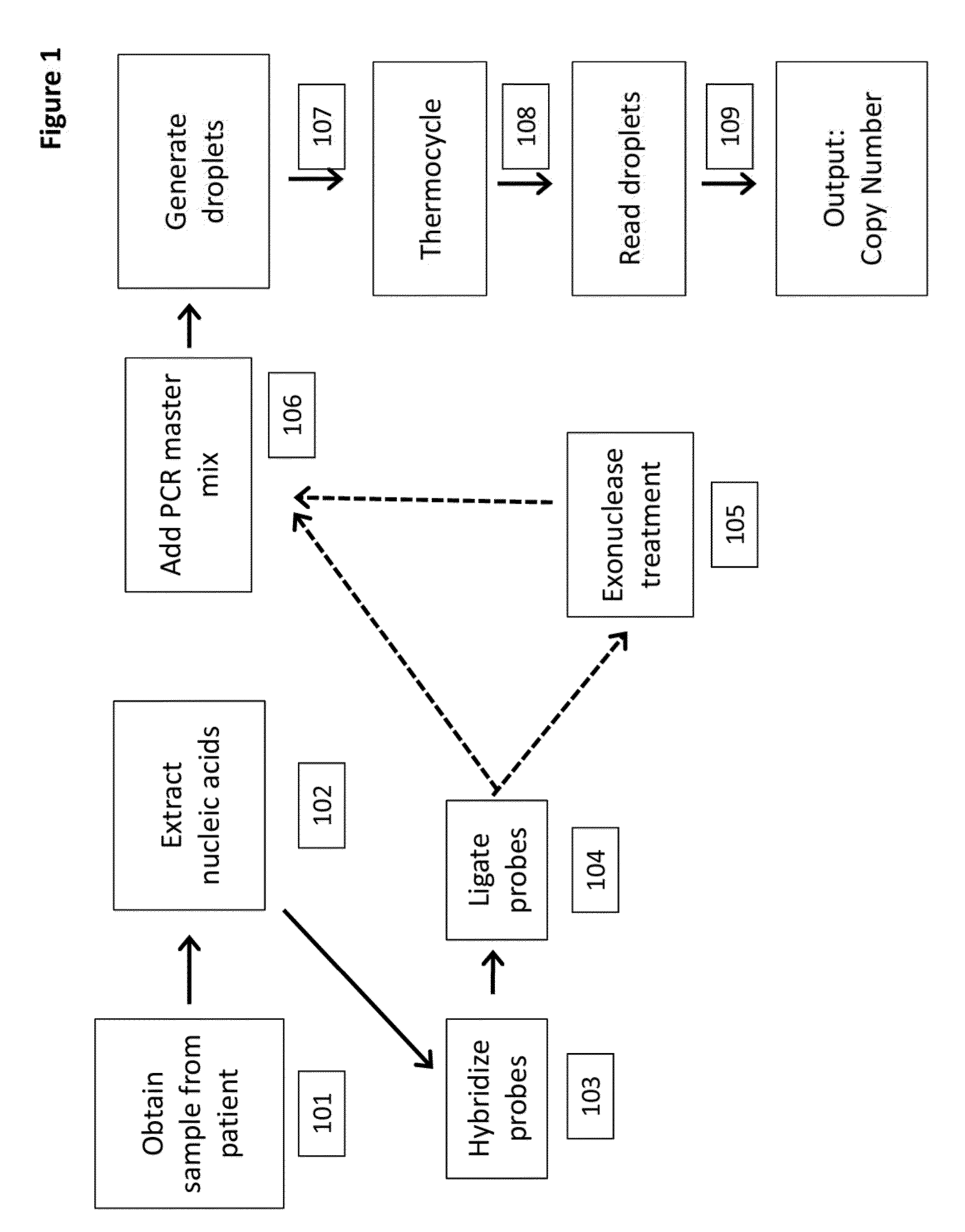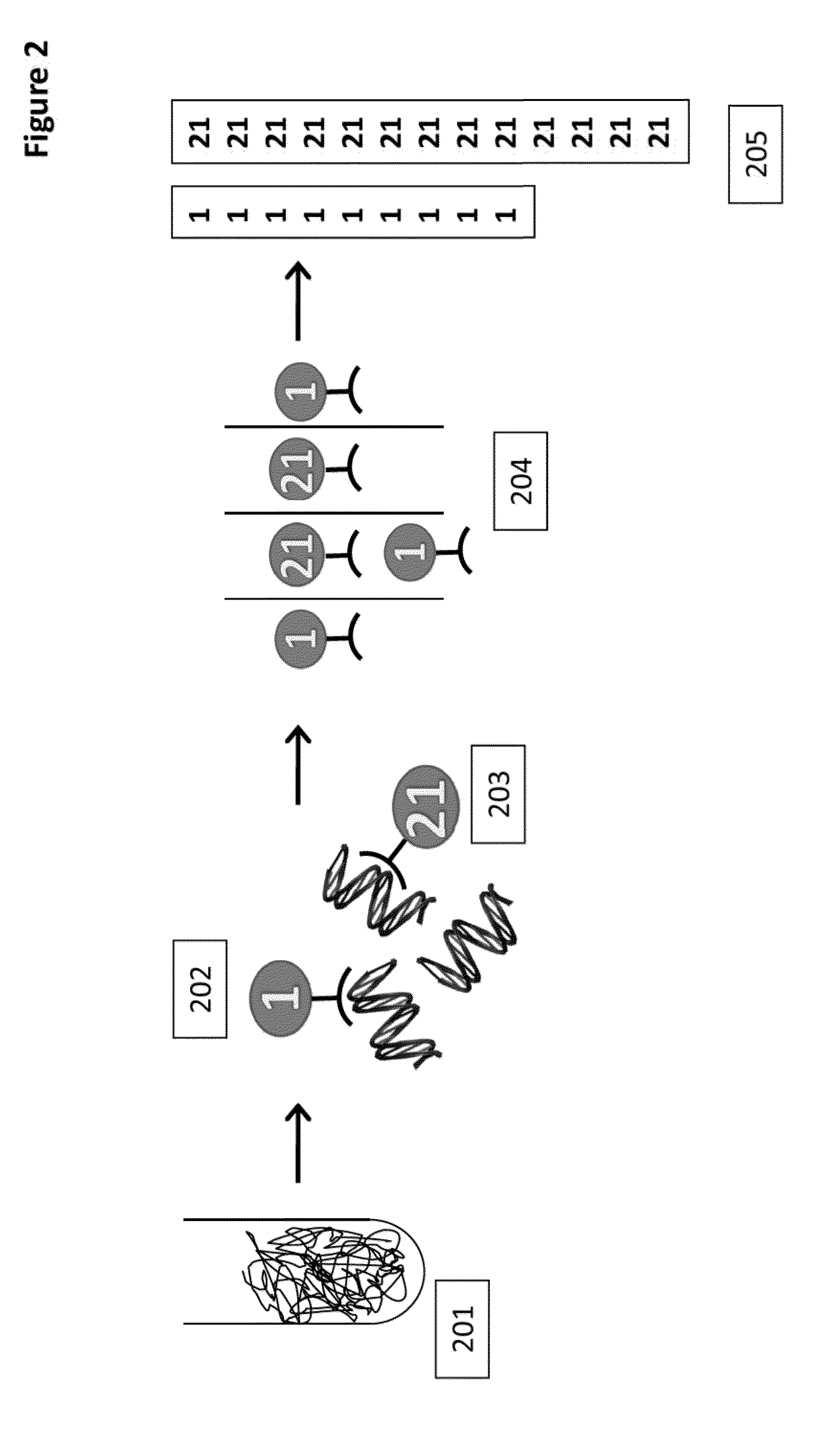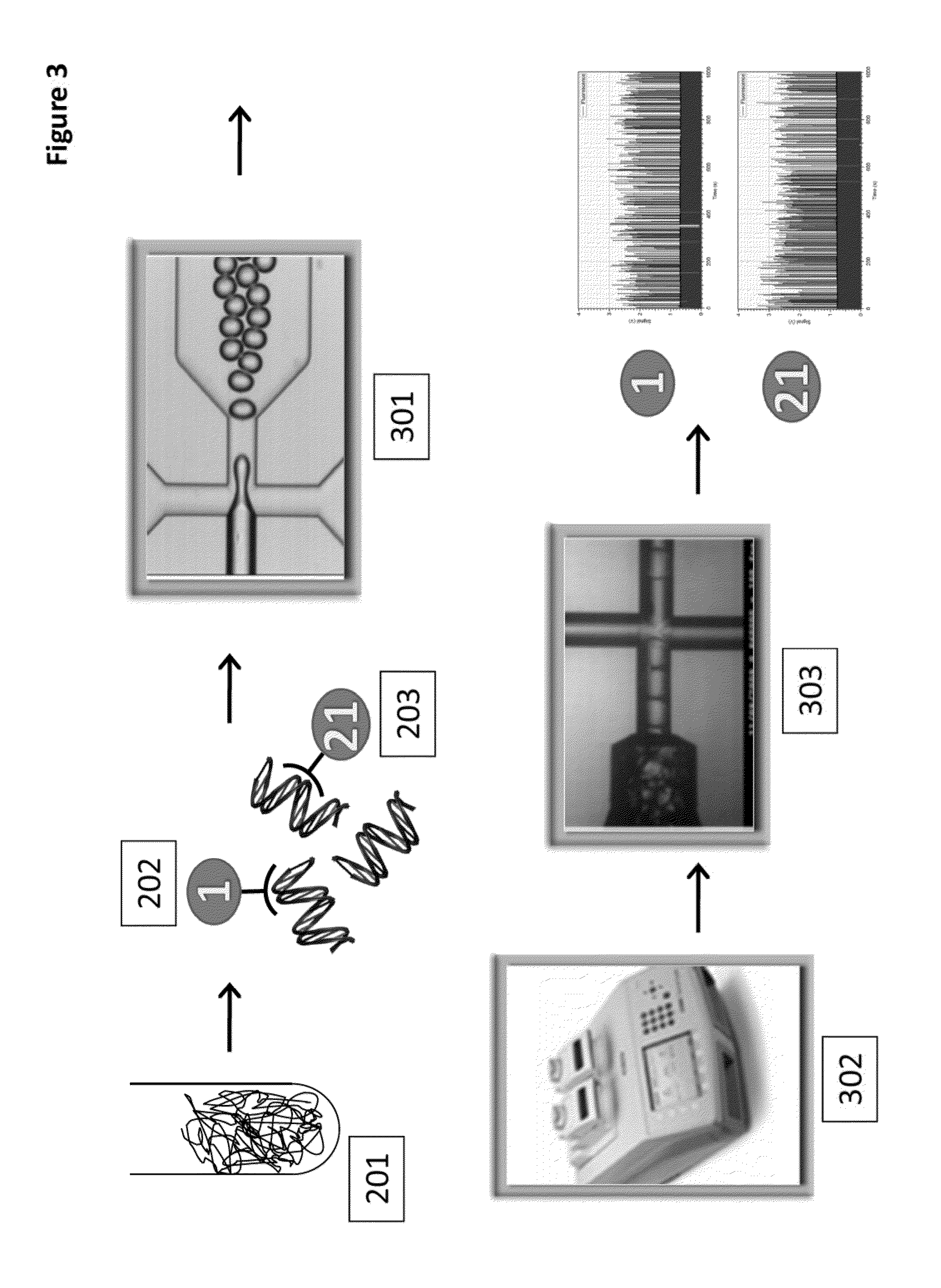Methods and compositions for detecting genetic material
a technology of genetic material and composition, applied in the field of methods and compositions for detecting genetic material, can solve the problems of unstable partitions, unstable partitions,
- Summary
- Abstract
- Description
- Claims
- Application Information
AI Technical Summary
Benefits of technology
Problems solved by technology
Method used
Image
Examples
example 1
Detection of Fetal DNA Using a Two-Color Detection Scheme
[0213]In this example, detection of a trisomy 21 fetal aneuploidy is described, where there is 3% fetal DNA in a maternal plasma sample. There are 1000 genome equivalents (GE) per mL in the maternal plasma, and a maternal blood volume of 20 mL is collected.
[0214]Plasma is isolated from the maternal blood sample by centrifugation, and the nucleic acids are purified and concentrated to a volume of 50 μL. The sample is mixed with an equal volume of PCR reagent containing the multiplexed assay components. The entire 100 μL sample is partitioned into 100,000 aqueous droplets having a volume of 1 nL per droplet. For an ideal positive droplet percentage for quantitation of 75%, this would mean 1.47 copies of target sequence per droplet, based on Poisson distribution, which translates to 147,000 targets that need to be compartmentalized into 100,000 1 nL droplets. The number of primer sets required to reach this is 147,000 GE / 10,000 G...
example 2
Detection of Fetal DNA Using a One-Color Detection Scheme
[0215]The conditions for Example 1 are used here, except that rather than using different colored target and reference probes, the sample is split (e.g. in half), then two set of droplets are generated, amplified and separately analyzed, with one half using a target probe and the other half using a reference probe.
example 3
Detecting Fetal DNA Using MIP-ddPCR
[0216]Cell-free plasma is isolated from a maternal blood sample by centrifugation. The nucleic acids are then purified and concentrated using a cell free DNA kit (Qiagen). The purified genomic DNA is then mixed with 1000 chromosome-sequence specific oligonucleotide probes (e.g., MIP probe) to Chromosome 21 (MIP-21Chr), and 1000 chromosome-sequence specific oligonucleotide probes (e.g., MIP probe) to Chromosome 1 (MIP-1Chr). Ligase, polymerase and other reaction components are added to the mix. The sample is incubated at 20° C. for 4 minutes. The sample is then incubated at 95° C. for 5 minutes to promote denaturation, and then at 60° C. for 15 minutes in order to promote annealing of the MIP probes to the genomic DNA. A gap fill reaction is then performed in order to circularize the MIP probes. (In some cases, the ends may be directly ligated without a gap fill reaction). Nucleotides are added to the sample, which is then incubated at 60° C. for 10...
PUM
 Login to View More
Login to View More Abstract
Description
Claims
Application Information
 Login to View More
Login to View More - Generate Ideas
- Intellectual Property
- Life Sciences
- Materials
- Tech Scout
- Unparalleled Data Quality
- Higher Quality Content
- 60% Fewer Hallucinations
Browse by: Latest US Patents, China's latest patents, Technical Efficacy Thesaurus, Application Domain, Technology Topic, Popular Technical Reports.
© 2025 PatSnap. All rights reserved.Legal|Privacy policy|Modern Slavery Act Transparency Statement|Sitemap|About US| Contact US: help@patsnap.com



